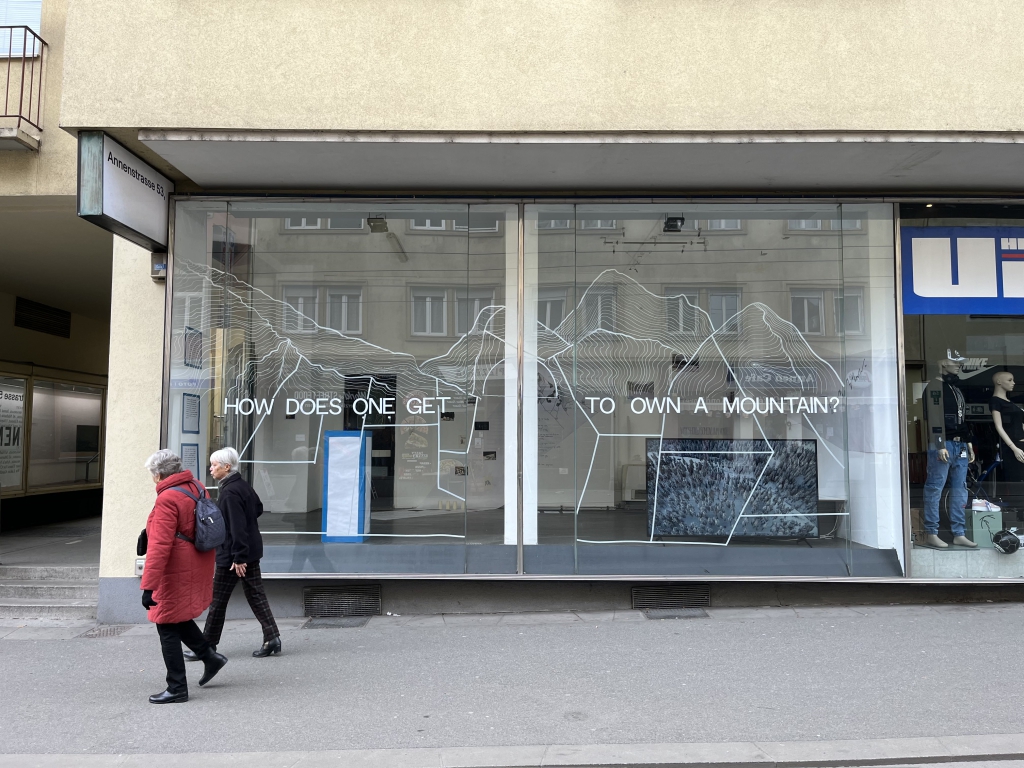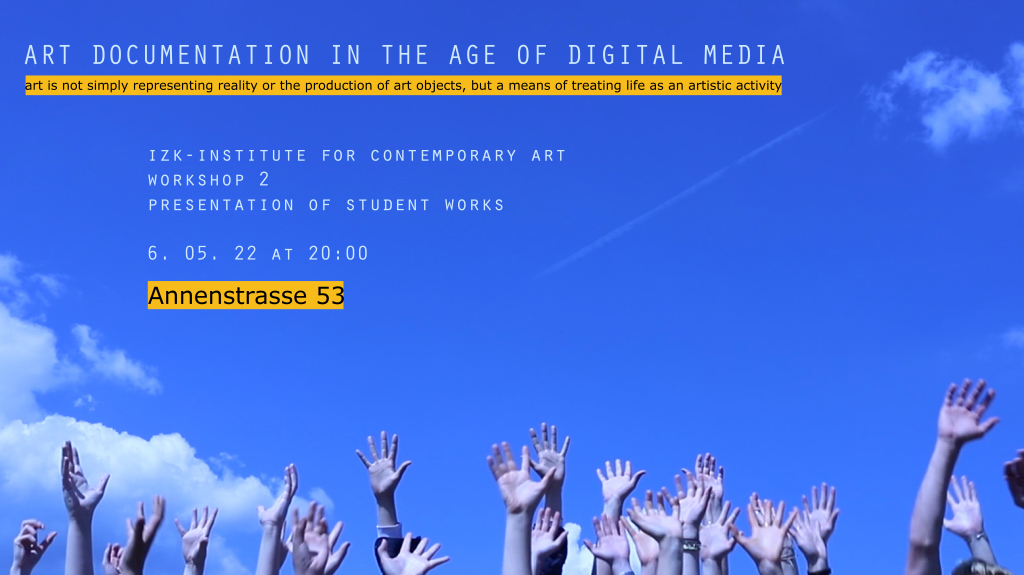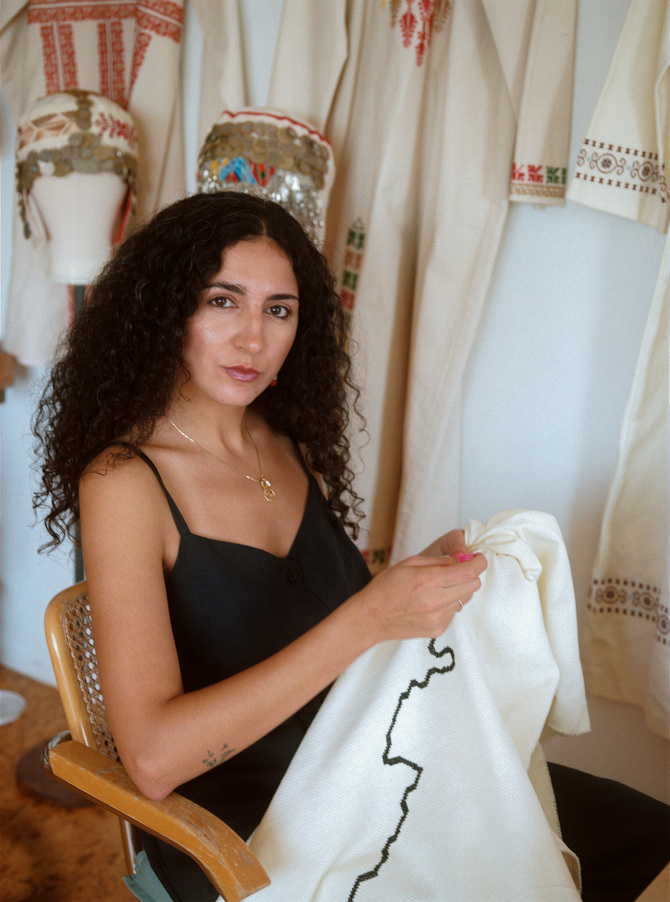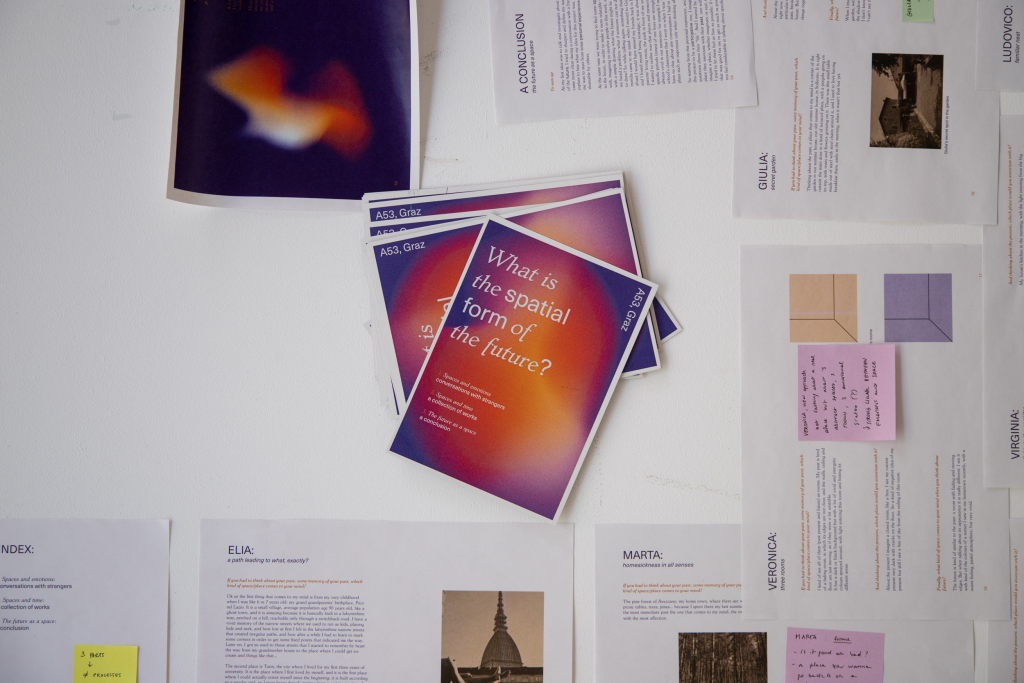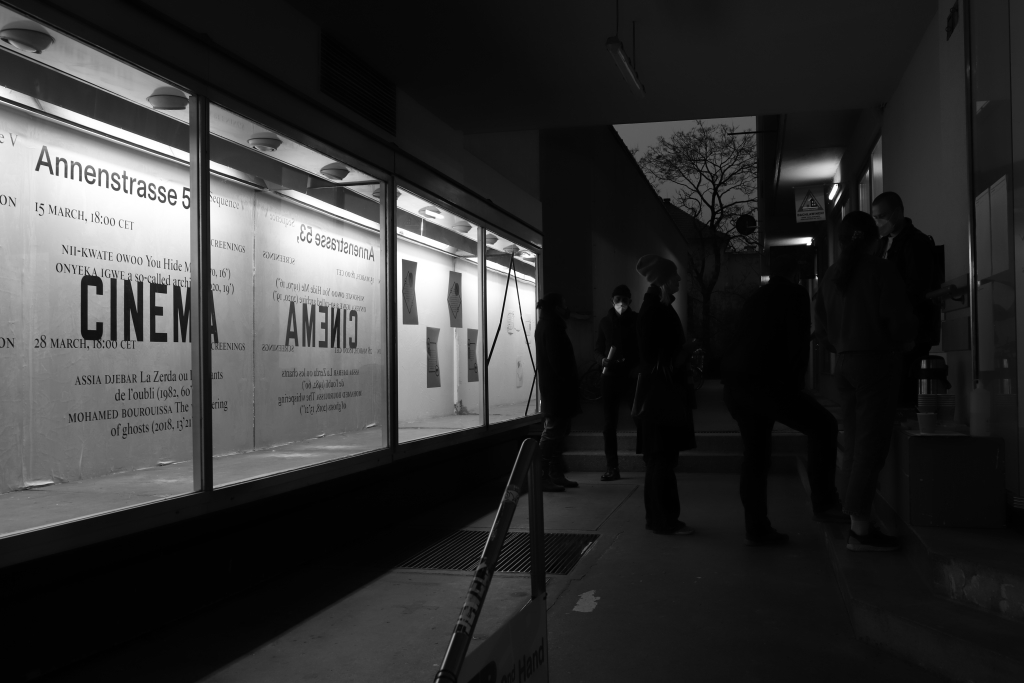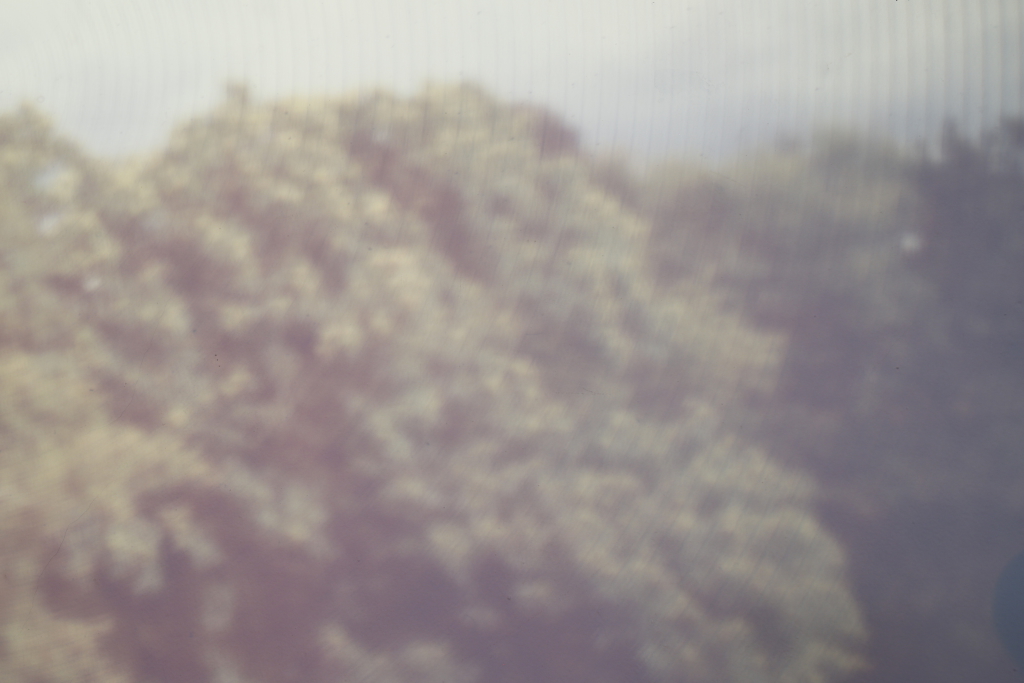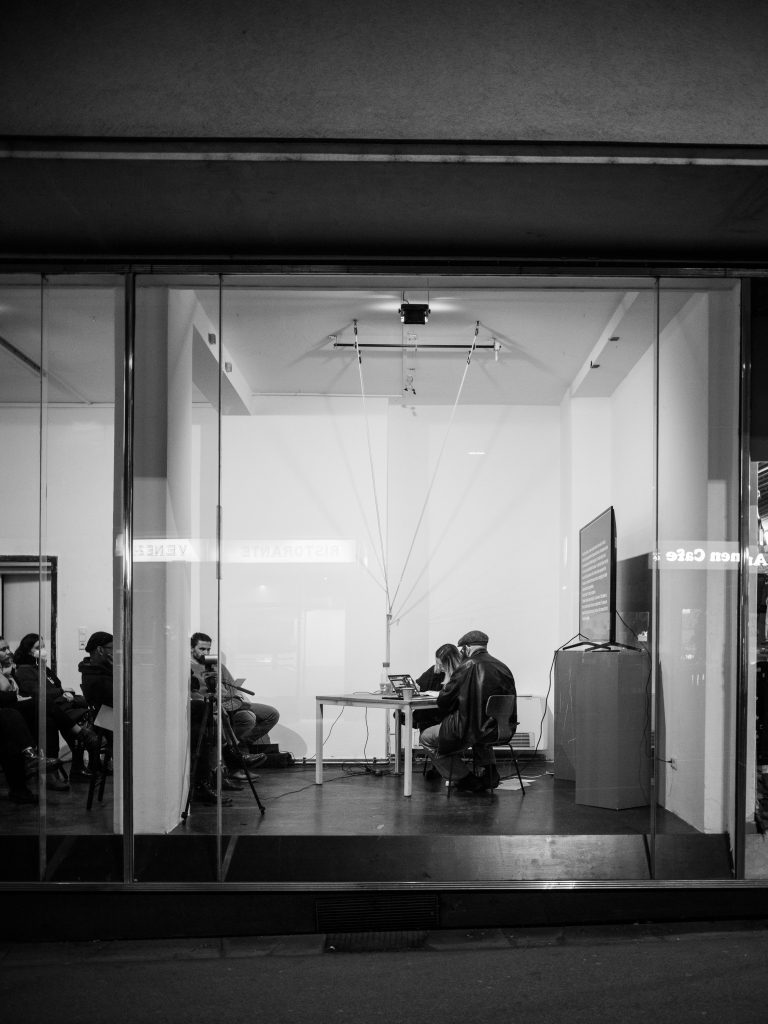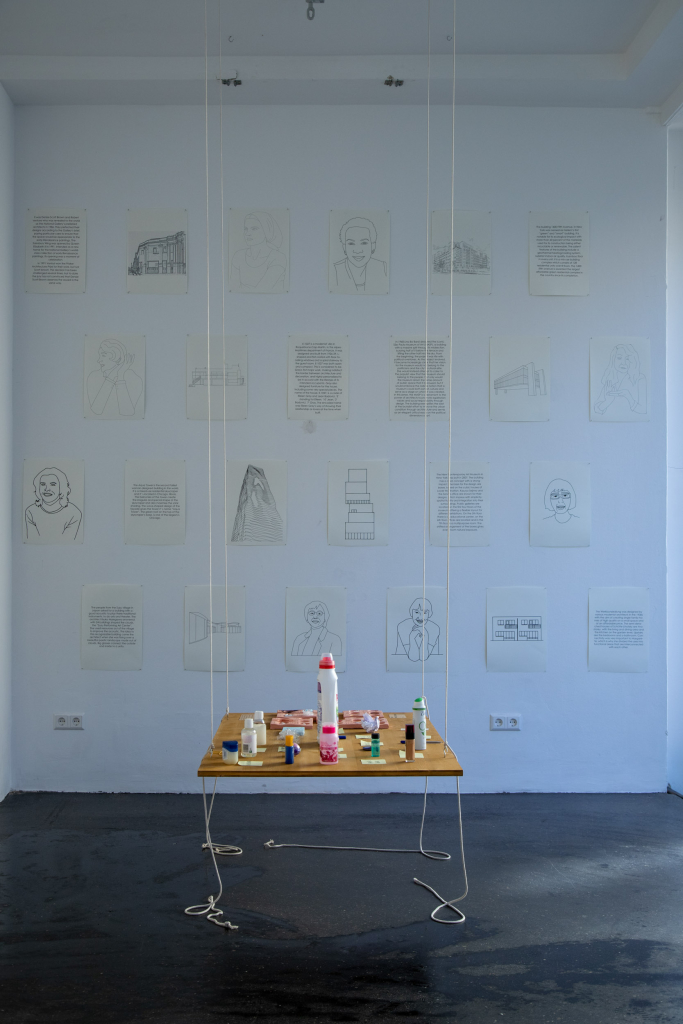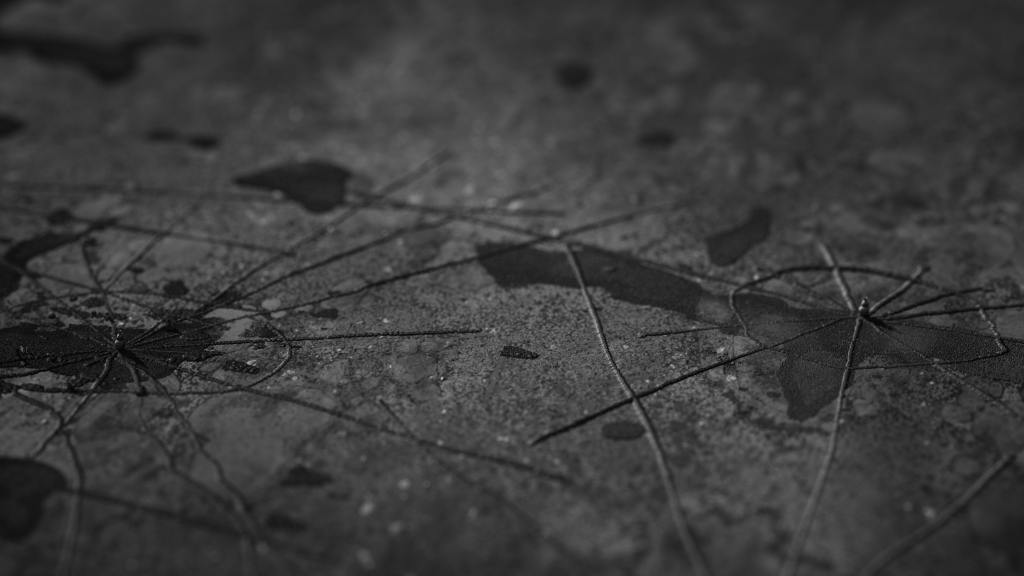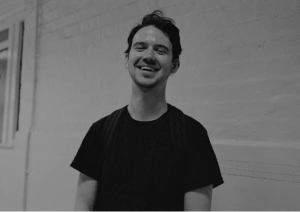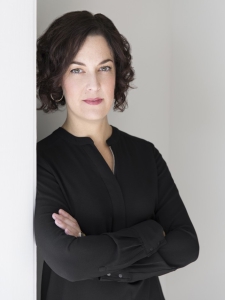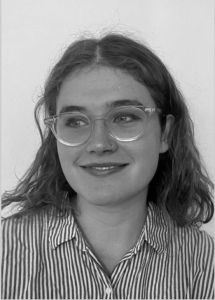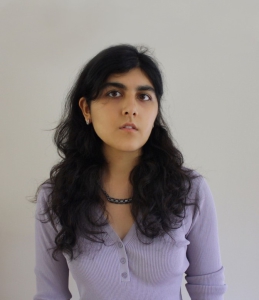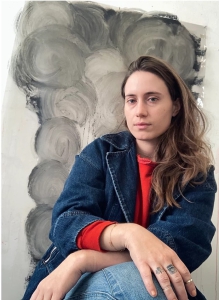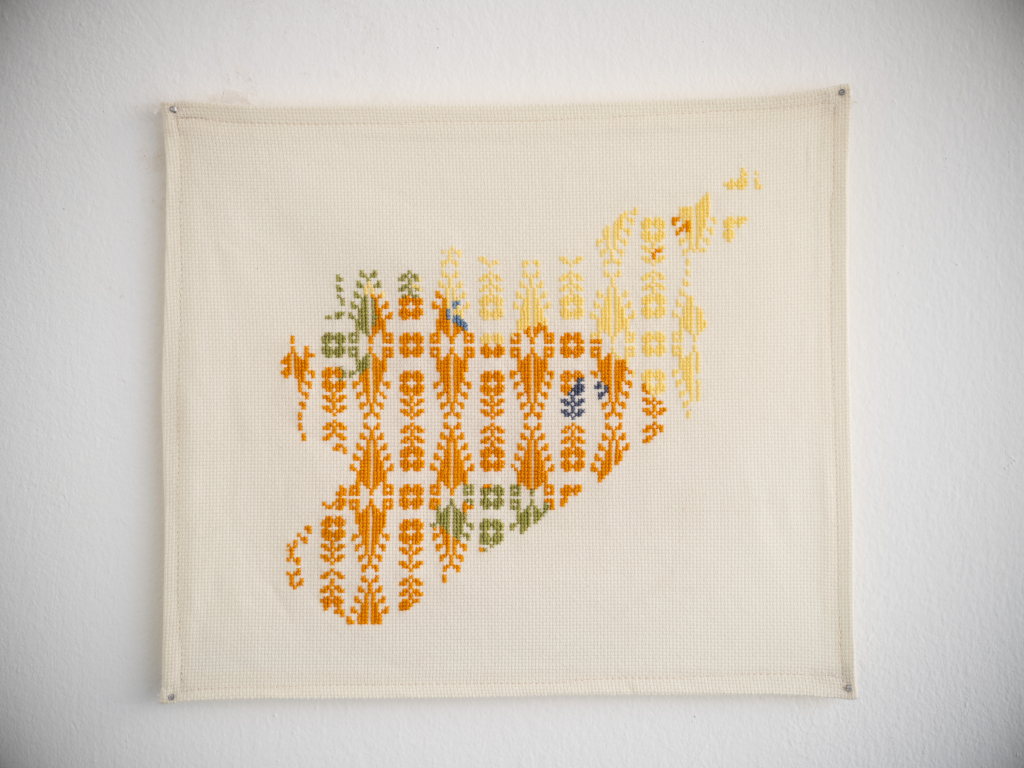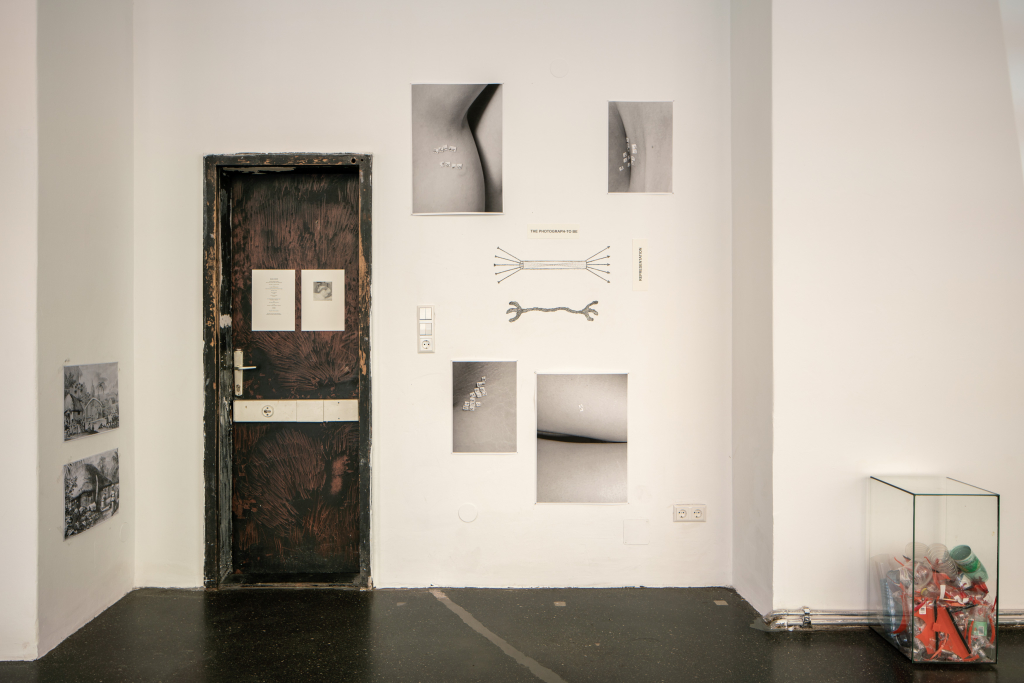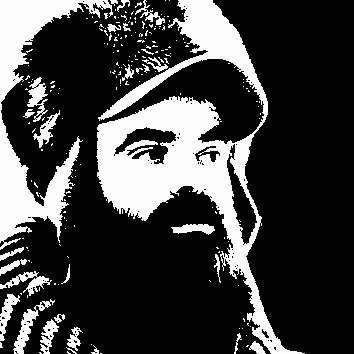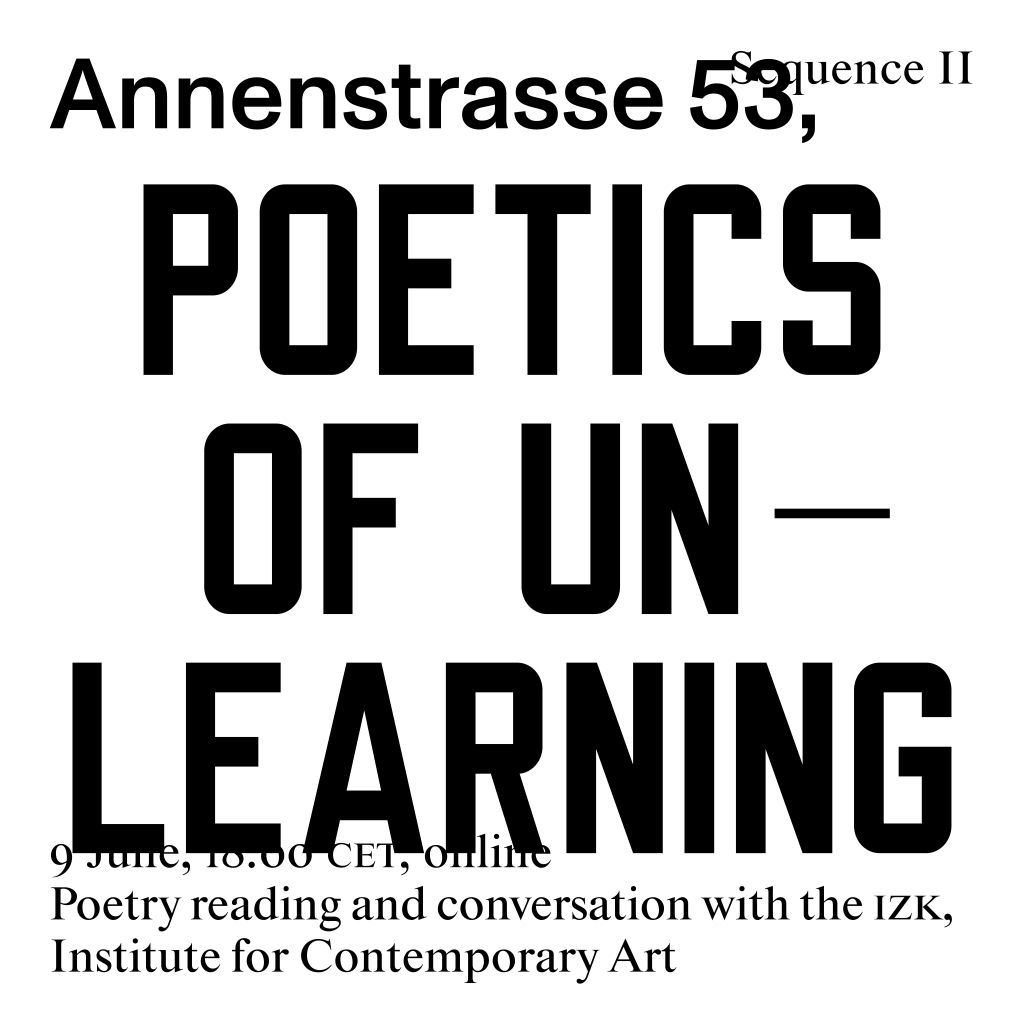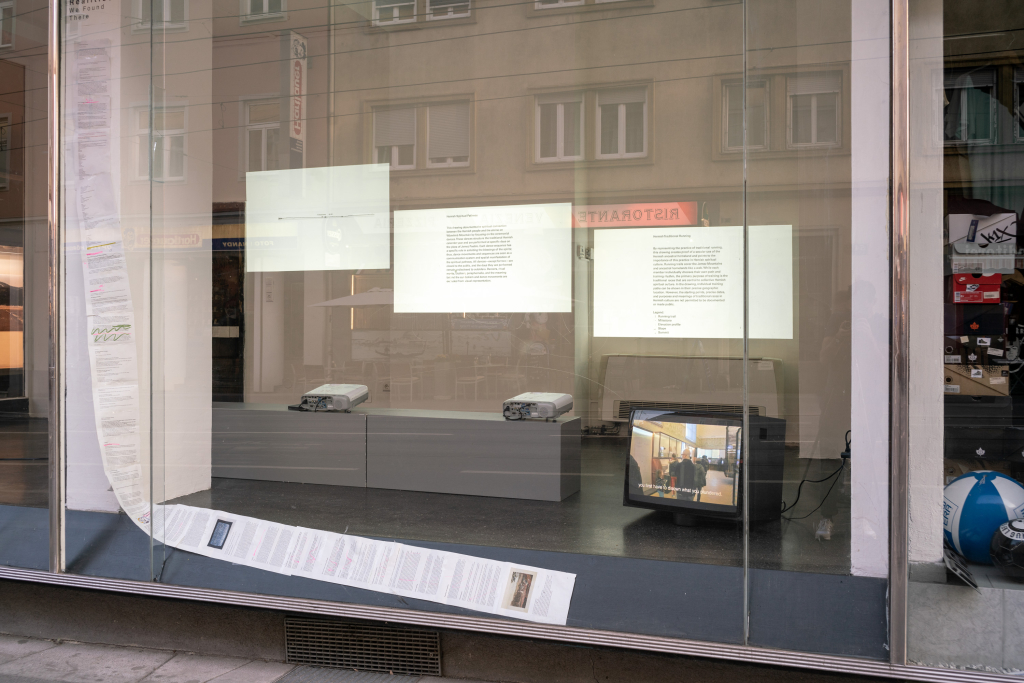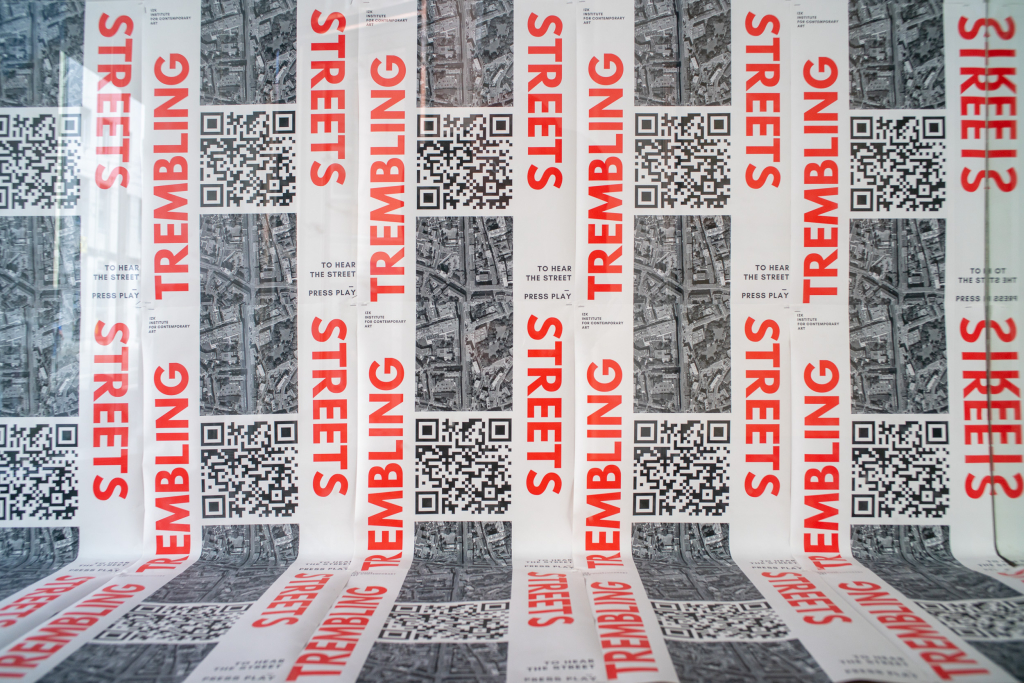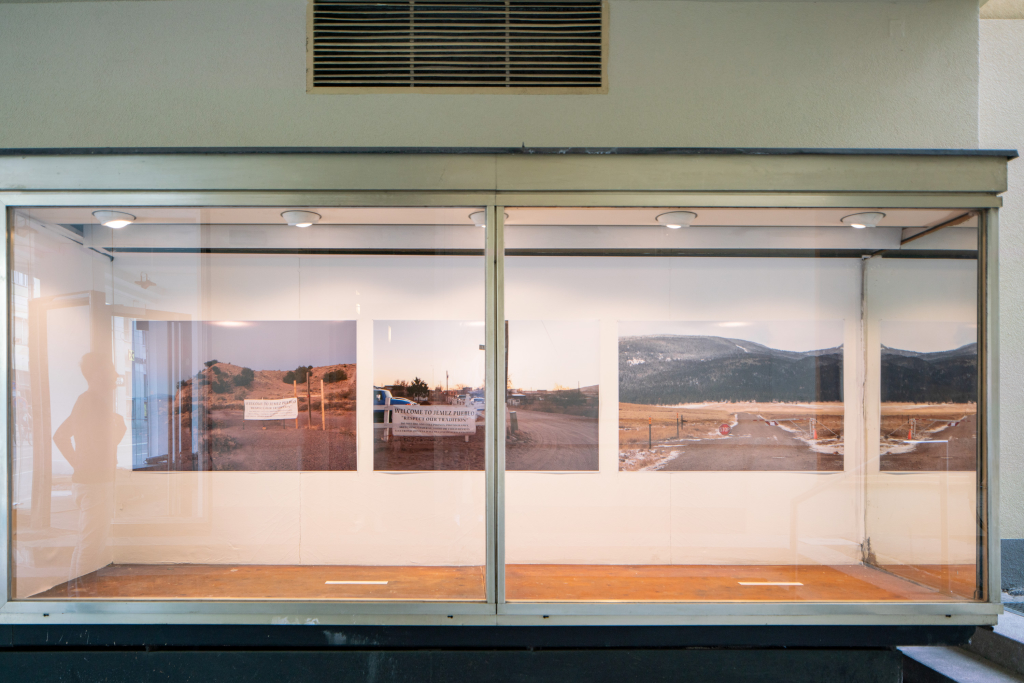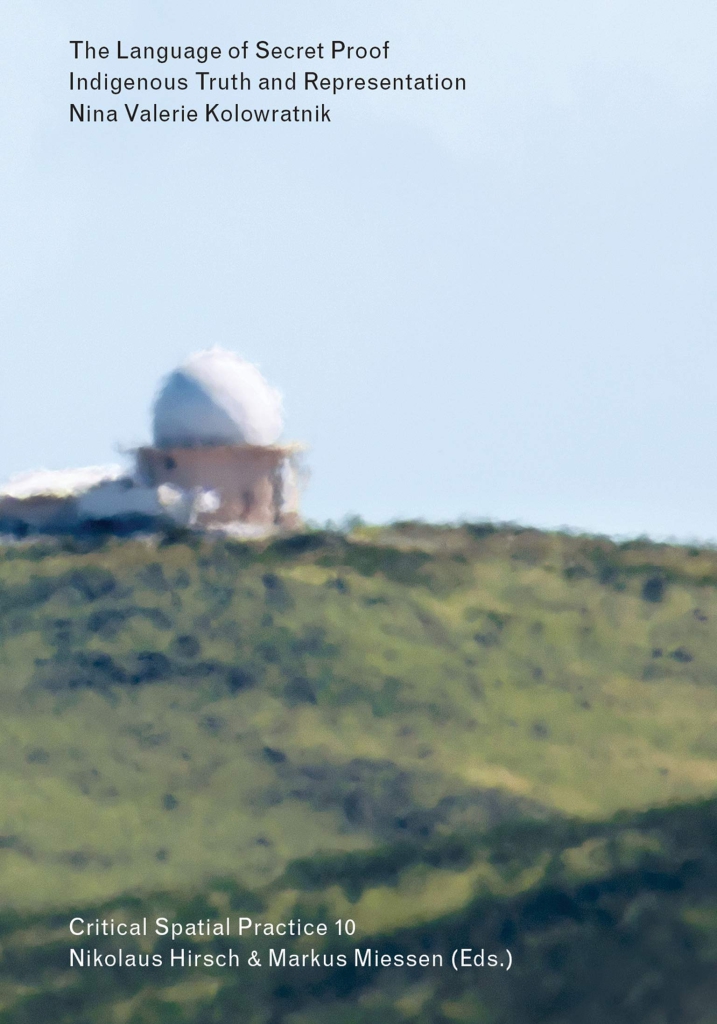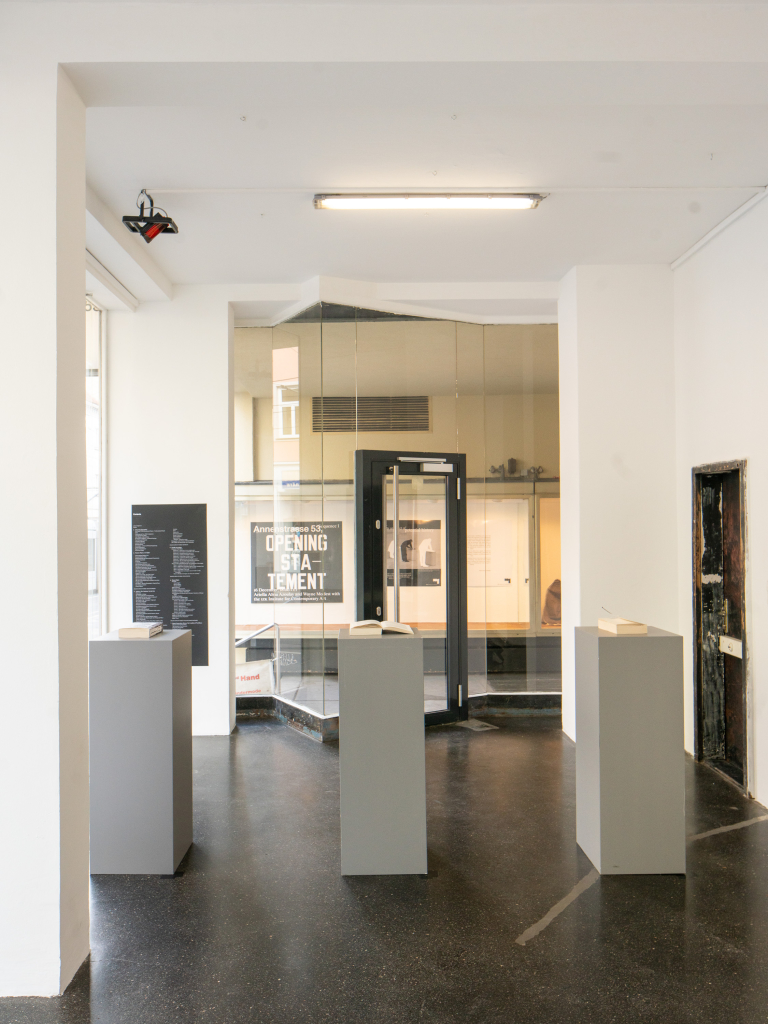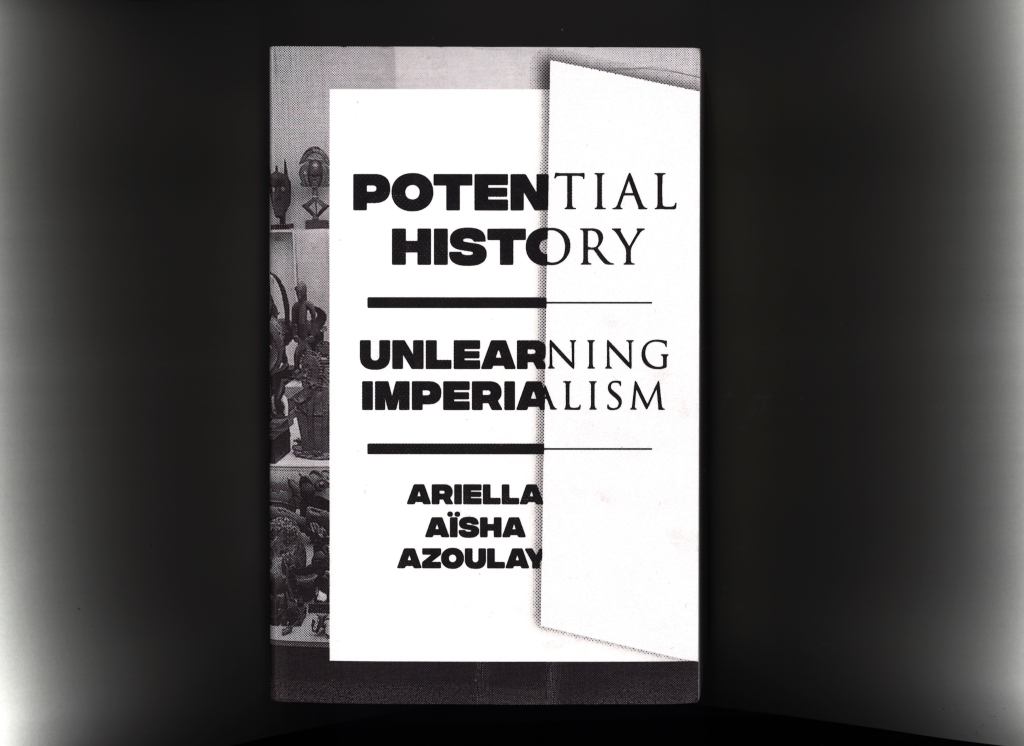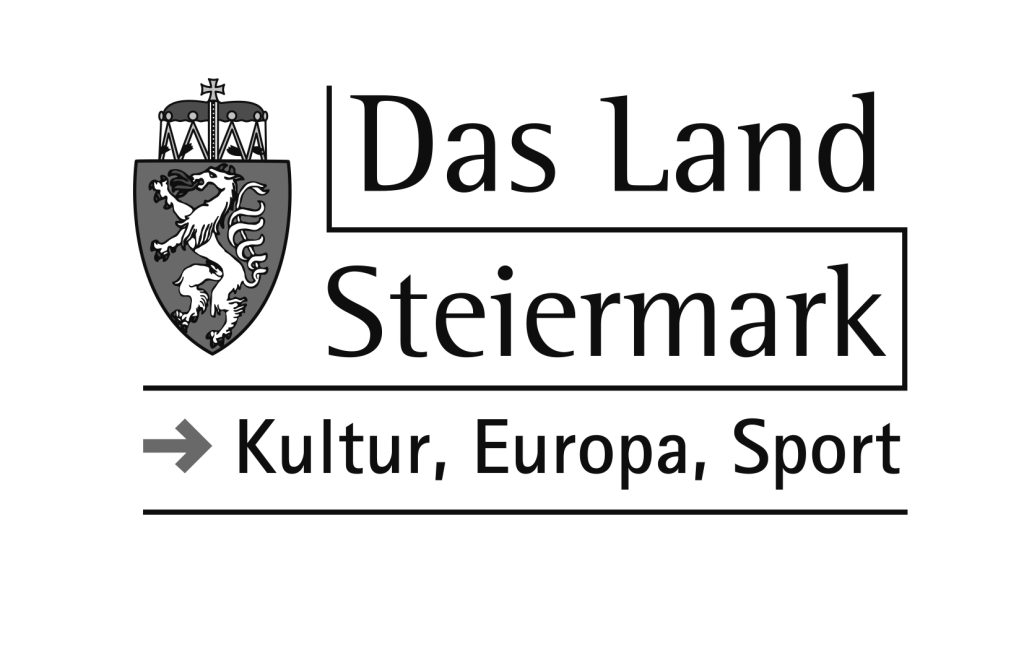Annenstrasse 53,
Student Exhibition: How Does One Get to Own a Mountain?
This semester, students from the IZK Vertiefen module Art Based Investigation titled How Does One Get to Own a Mountain?, convened by Rose-Anne Gush, Anousheh Kehar and Philipp Sattler, participated in a collaborative process of developing collective research formats and artistic expressions.
Within this course, students developed a collective project, which was concluded as an installation at Annenstrasse 53, which was opened with a performance by students and a talk by Rose-Anne Gush and Philipp Sattler.
Student Exhibition: Art Documentation in the Age of Digital Media
Within the workshop “Art Documentation in the Age of Digital Media” led by Gildo Bavčević at IZK, students developed an exhibition at Annenstrasse 53,. Bavčević is a multimedia artist who teaches at Split’s Art Academy. During the workshop that took place from 2-6 May 2022, students worked in groups to develop artworks embodying the challenges and issues, from personal to global, that are present today, in particular in relation to the acceleration of post-truth ideologies. Since May 6, their works are exhibited at Annenstrasse 53,.
Francesco Bignetti, Dalila Bilibani, Emilija Bukara, Jessica Lizette Cavazos Flores, Mhairi Katrina Dickie, Tamara Faber, Dominik Hutter, Anđela Marinković, Bardhë Memishi, Sabeth Iria Moschitz, Victoria Michaela Pirker, Marcel Posch, Andrea Senn, Max Benjamin Spamer, Kim Šunko, Lukas Thurner, Kim Benjamin Wildhirt
Photos by Amel Bešlagić
The Palestinian ‘Camp Dress’ as a Counter-Cartography of Resistance
Nour Shantout
29 April 2022, Annenstrasse 53,
Nour Shantout presented her project ‘Searching for the New Dress’. She unraveled the different layers of the research process and spoke about the challenges she faces when working as a researcher in an over-researched place such as Shatila camp. The talk also addressed counter-mapping as a way of resistance and how the camp as a counter-zone for social struggle connects different ‘traditions of the oppressed’, and their different experiences.
“Searching for the New Dress is a research-based project that looks at Palestinian embroidery in Shatila, a Palestinian camp in Lebanon. It explores how embroidery is influenced by the migration of Syrian Palestinian and Syrian women who took refuge there after the war in Syria. To create ‘New Dresses’ that reflect the socio-political, economic and demographic changes in the embroiderer’s life in the aftermath of the Syrian revolution, I learned to design new motifs and types of stitches which are usually associated with Syrian and Palestinian embroidery. The research also involves interviews with embroiderers in various embroidery centers in Shatila, identifying designs that reflect the changes in Palestinian embroidery. The project asks, what if a ‘New Dress’ emerges after the Syrian revolution, the destruction of the Yarmouk camp –the capital of the Palestinian diaspora–, and the displacement of thousands of Syrians? What would it look like? Which fabric, colours, threads and techniques would be used? Which political slogans and maps would it have?”
Nour Shantout is an artist and researcher. She received the Helen EL Khal prize(2014). She is currently pursuing a PhD in Philosophy at the Akademie der bildenden Künste Wien. She works around subjugated heritage, counter-memory, counter-history, labour and alienation, from a post-colonial feminist perspective.
Student Exhibition: What is the Spatial Form of the Future?
Presentation of a fanzine by Rachele Alborghetti, developed within the course Art-based Investigation: Questions from an architect who reads. A students’ inquiry!, led by Rose-Anne Gush, Philipp Sattler, and Milica Tomić.
7 April 2022, Annenstrasse 53,
What is the relationship between space and memory? Is it something subjective, does it depend on emotions, on sensations, on images…? Is there a way to find a spatial feature that might represent collectively and not, our idea of the future?
This is explored in the work “What is the spatial form of the future?” through a process that is led in three different steps and takes into account different sources and opinions. In the first part, “conversations with strangers”, the main aim is to see if there is a relation in between space and emotions, by earring and sharing stories and feelings. The second one explores the idea of memory and space, getting closer to the notion of time though “a collection of works” of different types. Finally the conclusion aims to understand what all this work led to, without giving a real answer but helping in some way to realise how the space around us is important and strongly linked with the idea of collective memory.
March-May 2022, Annenstrasse 53,
PROGRAMME
SEQUENCE 4: Slow Burn
Simon Oberhofer
23 February 2022, Annenstrasse 53,
A large format diapositive is projected until it will fade away completely. The image shows a park at peak vegetation, in full leaf. The level of vegetation indexes the phenomenon of “angstblüte” or fear-blossom, where, when under intense stress, the plant goes into survival mode and tries to procreate as much as possible. The projector serves as an inverted camera that spits out an image that finally vanishes.
The writing on the wall destroyed
Jacob Bard-Rosenberg
22 February 2022, Annenstrasse 53,
This talk by Jacob Bard-Rosenberg was hosted by Annenstrasse 53, in collaboration with IZK – Institute for Contemporary Art at TU Graz.
“Use whatever reaches you with caution./ Yellowed books, fragmentary reports/ Are my sources.” This warning introduces Bertolt Brecht’s Svendborg Poems, written from his exile in Denmark during the 1930s. One of Walter Benjamin’s final works was a set of commentaries that attempted to deduce the political and social content of Brecht’s lyric works. This talk will address some architectural (and anti-architectural) dialectics that rebound through Brecht’s poems and Benjamin’s criticism of them. It will focus in particular on images of slogans inscribed on walls of prisons and of borders. Amid the rubble of those walls, now destroyed, it will interrogate the relations of this writing to law and criminality, and consider a communist poetics of transmission through catastrophe.
Jacob Bard-Rosenberg has recently completed a PhD on dreams, memory, and forgetting in Adorno and Benjamin at Birkbeck College, University of London. For the last five years he has worked running an archive of social movements, activist ephemera, and radical art at MayDay Rooms in London. He is currently living transatlantically, occasionally translating obscure texts, and scrawling footnotes about 1930s communist writing.
Artistic Practice 2, led by Rose-Anne Gush, Philipp Sattler, and Milica Tomić
Art and the Social, led by Simon Oberhofer
REPAIR Lectures
In the context of her workshop REPAIR which took place at IZK, Ameli Klein hosted the following six guest lectures at Annenstrasse 53,
The lectures took place during workshop week, 29th November – 3rd December.
Ifor Duncan
29 November 2021, online
Weaponizing a River
Ifor Duncan is a writer and interdisciplinary researcher whose research focuses on the relationships between political violence and water spaces and materials. He completed his PhD at the Centre for Research Architecture (CRA), Goldsmiths, University of London, where he developed the concept of necrohydrology, which addresses the ways in which hydrological features are instrumentalized by border regimes as technologies of concealment and used as weapons against marginalized communities. His current research project, Submergences, seeks to explore how hydrological knowledge and practices can be mobilized to develop alternative strategies of resistance to such forms of weaponization of the environment. Prior to joining the Center for the Humanities and Social Change at Ca’ Foscari, Ifor taught at the CRA and in the Media Studies program at the School of Architecture at the Royal College of Art.
Sara Garzon
30 November 2021, online
Notes on Latin American Futurity
Sara Garzon is a curator and writer living between Mexico City and New York. Sara is a PhD candidate in Art History at Cornell University, specializing in modern and contemporary Latin American art. In her research, Sara focuses on themes of decoloniality, temporality, and indigenous ecocriticism. Sara has served as a Jane and Morgan Whitney Curatorial Fellow and a Lifchez-Stronach Curatorial Fellow at the Metropolitan Museum of Art and an Audience Engagement Associate at the Brooklyn Museum. In addition to her museum work, Sara has also curated a number of exhibitions including Not Everything that Shines at Museo Antropológico y de Arte Contemporáneo in Guayaquil (MAAC, 2019); Gestures of Power at Profound Studio, Brooklyn, NY (2018); and Nobilitas: Of Royal Blood and Other Myths at KB Espacio de Arte in Bogotá, Colombia (2017), to name a few.
Sara has contributed to several exhibition catalogs, anthologies, journals, and art magazines, including DASartes Magazine, Ocula Magazine, Terremoto, Hyperallergic, and others. Her most recent editorial project, Worldmaking Practices: A Take on the Future was published thanks to the support of Colección Patricia Phelps de Cisneros, and her article “Manuel Amaru Cholango: Decolonizing Technology and the Construction of Indigenous Futures” was awarded Best Essay in Visual Culture Studies 2020 by the Latin American Studies Association (LASA).
Sara was invited to be a curator in residence at Casa GIAP, a residency on “Creative Ecologies and Decolonial Futurities” in Chiapas, Mexico (2019); the Emerging Curators’ Workshop at Para Site in Hong Kong (2019), and was part of the Science and Technology Society at the Delfina Foundation in London (2020).
Melissa Messina
1 December 2021, online
Championing women artists?
Melissa Messina is a U.S.-based arts professional who has developed stimulating exhibitions, dynamic site-specific projects, and engaging public education programs both independently and in leadership positions with museums and nonprofit arts organizations. For the past 20 years, her work with regional, national and international artists has been presented throughout the U.S. in Atlanta, Kansas City, Miami, New York, New Orleans, Richmond, Savannah and Washington, D.C., as well as in Bermuda, France and Hong Kong. She has lectured and published widely, and her research has been supported by Creative Time and the Andy Warhol Foundation, as well as through fellowships at the Stuart A. Rose Library at Emory University, Atlanta, GA, and the Crystal Bridges Museum of American Art, Bentonville, AR.
In addition to serving select public and private clients, she is the curator of the Mildred Thompson Estate. She has also recently served as guest curator at the Virginia Museum of Contemporary Art, Spelman College Museum of Fine Art, Visual Arts Center of Richmond, and New Orleans Museum of Art, and co-curated the 2018 and 2020 Bermuda Biennials. In 2017, she co-curated Magnetic Fields: Expanding American Abstraction, 1960s to Today, an intergenerational exhibition of 21 black women abstract artists that traveled from the Kemper Museum of Contemporary Art in Kansas City to the National Museum of Women in the Arts, Washington, DC.
Carmen Lael Hines
2 December 2021, Annenstrasse 53,
Data Publics: Public Pluralities in an era of data determinancies
Carmen Lael Hines is a practice-based researcher, curator, and artist. She currently works at the Centre of Global Architecture in Vienna, Austria, investigating the impact of digital platforms on our built environment https://global-architecture.org/. She also teaches in the Department of Visual Cultures at TU Vienna: https://visualculture.tuwien.ac.at/. As assistant curator for the Austrian contribution to the Venice Architecture Biennale 2021, she supported the realization of the exhibition “Platform Austria” in digital, tangible and editorial form(s). She received a B.A. of Arts (Hons) in English Language and Literature from the University of Oxford (Lady Margaret Hall) and an M.A. of Arts (with Distinction) in Contemporary Art Theory from Goldsmiths College, University of London. Her research interests include: Platform Capitalism, Platform Urbanism, Urban Informality, Gender/Sexuality Studies, and Theories of Social Reproduction.
Artist Talks:
Iman Datoo
30 November 2021, online
Kinnomic Botany: freeing the potato from its scientific and colonial ties
Iman Datoo’s artistic and scientific practice speculates on the evolution of our botanical landscapes through world-making and storytelling. Primarily working with poetry, mapmaking, and film, she explores the role of tacit knowledge in decentralizing narratives about plants and articulating alternative futures with our non-human counterparts. Click here to see artwork and research.
Lily Moebes
3 December 2021, online
Sii gentile con me | Be gentle with me
Lily Moebes is a Brooklyn-based artist working with textiles, printmaking, and painting. She has been a visiting artist at organizations such as the Textile Arts Center, the Museum of Art and Design, Drop Forge and Tool, and her work has been included in exhibitions in New York City, DC and San Francisco. She graduated with a BA from Barnard University in 2015 and is currently in her first year of MFA studies at Parsons University.
Map of Military Influence in Syria
Nour Shantout
Annenstrasse 53,
This work was part of the ongoing project “Searching for the New Dress” 2021. It was added to our exhibition Politics of (Un) learning alongside FILMS FOR A FREE PALESTINE and works by Ninan Kolowratnik and Boudur Khalil.
Palestinian embroidery was historically affected by the movement of women who practiced it. In turn, it reflected their conditions, especially in moments of crisis. For instance, the ‘Camp Dress’ or the ‘New Dress’ is a Palestinian embroidered dress which emerged when women from all over Palestine were suddenly mixed within camps in the neighboring countries, namely Jordan, Syria, and Lebanon, during the aftermath of the 1948 Nakba. The researcher, collector and historian Widad Kamel Kawar named the ‘New Dress’, which was ‘born of camp life and resistance’.
This research-based project looks at Palestinian embroidery in Shatila, a Palestinian camp in Lebanon. It explores how embroidery is influenced by the migration of Syrian Palestinian and Syrian women who took refuge there after the war in Syria. To create ‘New Dresses’ that reflect the socio-political, economic and demographic changes in the embroiderer’s life in the aftermath of the Syrian revolution, I will learn to design new motifs and types of stitches which are usually associated with Syrian embroidery. The research also involves interviews with embroiderers in various embroidery centers in Shatila, identifying designs that reflect the changes in Palestinian embroidery. The project asks, what if a ‘New Dress’ emerges after the Syrian revolution, the destruction of the Yarmouk camp – the capital of the Palestinian diaspora –, and the displacement of thousands of Syrians? How would it look like? Which fabric, colors, threads and techniques would be used? Which political slogans and maps would it have?
‘Searching for the New Dress’ is supported by AFAC @afac.fund & Culture Resource @culture_resource
FILMS FOR A FREE PALESTINE
FILMS FOR A FREE PALESTINE was the third sequence of the programme at Annenstrasse 53, conceived within the steirischer herbst ’21 parallel program. It took place as five screenings and a discussion between Basma Alsharif, Jumana Manna, and Even Its Name. Films for a Free Palestine is selected by Daniella Shreir. Shreir first programmed For a Free Palestine: Films by Palestinian Women for Another Screen (Another Gaze journal’s streaming platform) during May–June 2021.
23.09.
18:30 Introduction and Screening
Layaly Badr
The Road to Palestine (1985, 7’)
Razan AlSalah
Your Father Was Born A 100 Years Old, And So Was The Nakba (2017, 7’)
Mahasen Nasser-Eldin
The Silent Protest: Jerusalem 1929 (2019, 20’)
30.09.
18:30 Introduction and Screening
Rosalind Nashashibi
Dahiet Al Bareed, District of the Post Office (2002, 7’)
Hreash House (2004, 20’)
Electrical Gaza (2015, 17’)
5.10.
17:45 Screening
Basma Alsharif
We Began By Measuring Distance (2009, 19’)
Home Movies Gaza (2013, 25’)Jumana Manna
Blessed Blessed Oblivion (2010, 21’)
A Sketch of Manners (2013, 12’)
19:30 Discussion
Basma Alsharif (online presence), Jumana Manna (online presence), and Even Its Name
7.10.
18:30 Introduction and Screening
Shuruq Harb
The White Elephant (2018, 12’)
Basma Alsharif
Farther Than The Eye Can See (2012, 13’)
O, Persecuted (2014, 12’)
14.10.
18:30 Introduction and Screening
Larissa Sansour
A Space Exodus (2009, 5’)
Nation Estate (2012, 9’)
Mona Benyamin
Moonscape (2020, 17’)
Student Exhibiton: Flowers (Not) Worthy of Paradise and Shutter
Abdelrahman Elbashir, Budour Khalil and Anastasiia Kutsova
Part of the Land, Property, and Commons exhibition in Semmering curated by Hedwig Saxenhuber with the work Flowers (Not) Worthy of Paradise by Milica Tomić
If the sublime landscape of Semmering and its history can be seen as a backdrop, a set for the theater of societal hierarchies (Sekulić and Tomić, 2020), Milica Tomić asks whose labour is exploited to maintain them as sites of nourishment and enjoyment; who is displaced and whose land is occupied? Who are those who remain cast out of the “Euro-Christian garden of ‘earthly delights’, even if it is precisely their knowledge and labour in the real garden that feeds and sustains this symbolic garden.” (Gray and Sheikh, 2018) Tomić invites students (IZK, Architecture faculty, TU Graz) to look for different forms of knowledge and relations that counter the representative, imperial Landscapesthat feature so prominently in the Western imagination. In her installation, Tomić looks at the garden as a form of resilience and resistance to colonial barbarism and forced acculturation. Anastasiia Kutsova draws attention to the ЖКХ (ZHKH) garden art that features various aspects of Ukrainian post-Soviet realities and seeks for new societal forms. Abdelrahman Elbashir’s research unpacks the materialised emergence of the political from the agricultural landscape in contemporary Sudan through histories of relational systems in the context of British occupational rule.
Shutter
Budour Khalil
‘’Paralleling this mass of water, the third metamorphosis of the abyss thus projects a reverse image of aIl that had been left behind, not to be regained for generations except more and more threadbare in the blue savannas of memory or imagination.’’
Édouard Glissant, Poetics of Relation
To describe the African diaspora following the journey on the slave ship, Glissant draws the image of a living fibril. These journeys caused a violent severance, an erasure of a world, however, an incomplete severance. This incompleteness made possible the forming of spaces within the brutality of the plantations, within which there was room for rituals, relationships to ancestors, rhizomatic connections between the enslaved and forms of autonomy. For Glissant, such spaces included the creole gardens. Similar to the image of a living fibril, Ariella Azoulay describes a ‘’photograph-to-be’’; an immaterial construct that prefigures and conditions the closing and opening of the shutter, as well as the violence which accompanies its operation. The work begins by tracing the Creole gardens, which for a long time escaped the Western gaze and the brutality of representations otherwise seen, for example, in the depiction of the cottages of the enslaved. This violence persists today, through representing in research sacred and secret traditions and plants which exist in these gardens. If we consider the photograph-to-be as an ideological apparatus, accompanying violence and contributing to it, and ideology, as Althusser puts it, as omnipresent. If we consider that ‘’the eternity of the subconscious is not unrelated to the eternity of ideology’’, and if we believe in the non-finality and reversibility of the shutter as well as its reversibility, it is possible to compare the shutter to the ‘’setting’’ in a psychoanalytic process. Using Jane Rendall’s site-writing method, self-portraits are taken in an attempt to remove the ‘other’ who controls the shutter, and to uncover through self-portraits the politics of one’s own body in representation. Photographs were taken, written about, and retaken, uncovering a tension between the body and the lens, discovering the boundaries of a woman’s body in representation. These boundaries are then crossed to display parts of the research, moving so close to the body that its nakedness becomes undecipherable, freeing the body from the gaze while reminding and hinting at, but not analysing or dissecting the Creole Gardens.
Marcell Mars – Distributed Resources versus Distributed Tech
Marcell Mars
23 June 2021, online
New technologies, backed by venture capital, come with promises. Those promises rarely get fulfilled. Still, there are existing resources that we very much rely on, such as Science Hub, Library Genesis, Aaaarg, Monoskop, Ubu or Memory of the World, and those resources are not backed by venture capital, but are backed by tried, tested technologies and people who care. Yet, we have managed not just to forget the promises those technologies came with but to forget if they ever promised anything at all. We have come to rely on them, but we should also learn from them. As was written in the Custodians.online letter on the occasion of Ubu.com’s 20th anniversary:
– Keep it simple and avoid constant technology updates. Ubu is plain HTML, written in a text-editor.
– Even a website should function offline. One should be able to take the hard disk and run. Avoid the cloud – computers of people you don’t know and who don’t care about you.
– Don’t ask for permission. You would have to wait forever, turning yourself into an accountant and a lawyer.
– Don’t promise anything. Do it the way you like it.
– You don’t need search engines. Rely on word-of-mouth and direct linking to slowly build your public. You don’t need complicated protocols, digital currencies or other proxies. You need people who care.
– Everything is temporary, even after 20 years. Servers crash, disks die, life changes and shit happens. Care and redundancy is the only path to longevity.
Nenad Romić (aka Marcell Mars, b. 1972). Advanced internet user. http://ki.ber.kom.uni.st
Marcell is one of the founders of Multimedia Institute – mi2 (1999) and club mama in Zagreb (2000). He initiated GNU GPL publishing label EGOBOO.bits (2000); started Skill sharing (2004) informal meetings of technical enthusiasts in mama + regional hacker gatherings ‘Nothing will happen’ (2007).
Mars started his research “Ruling Class Studies” at Jan van Eyck (2011-12), continued at Akademie Schloss Solitude (2013) and since spring 2015, he is a PhD student at Leuphana University in DCRL (Digital Cultures Research Lab). “Ruling Class Studies” is a research of corporate state-of-the-art digital innovation, adaptation, and intelligence. It looks closely at the Google, Amazon, Facebook and eBay.
Since 2018 he joined Centre for Postdigital Cultures at Coventry University as Research Fellow.
Public Library/Memory of the World was established in 2012 to develop sociotechnical infrastructure and invigorate (again) historical argument for universal access to knowledge. For MotW Marcell develops software: [let’s share books] Calibre plugin and related server infrastructure. Public Library/Memory of the World was heard and exhibited at Museo Reina Sofía, 98weeks, Impakt Festival, Transmediale, The New School, Kunstverein Stuttgart…
SEQUENCE 2: Poetics of Unlearning
9 June 2021
Myung Mi Kim, Momtaza Mehri and Christina Chalmers joined us online at Annenstrasse 53, for readings and conversation. Departing from the IZK semester-theme ‘unlearning’, our conversation considered how a ‘poetics of unlearning’ brings together thinking, feeling and critique. What tensions, for example, between the roughness or smoothness of ‘learning’ and ‘unlearning’ might be produced? What limits, at the level of habit, pattern, model, language, translation and feeling are exposed in this process? Can we ‘unlearn’ the colonial-capitalist conditions that preside in our institutions? What is the scale of a poetics of unlearning? Where is its surface? What does it reach towards, or gather around itself? What shifts or ruptures might it produce?
Myung Mi Kim was born in Seoul, Korea. She immigrated with her family to the United States at the age of nine and was raised in the Midwest. Her collection of poems Under Flag (1991) won the Multicultural Publishers Exchange Award of Merit; subsequent collections include Civil Bound (2019), Penury (2009), River Antes (2006), Commons (2002), DURA (1999), and The Bounty (1996). An avant-garde poet who often employs fragmentary language and uses the white space of the page, Kim explores issues of dislocation, colonization, immigration, loss of her first language, and the fallout of history in her work. Myung Mi Kim is James H. McNulty Chair of English at the University at Buffalo, State University of New York.
Momtaza Mehri is a poet and independent researcher. Her work has appeared in publications such as Jewish Currents, Granta, Artforum, The Guardian, BOMB Magazine, and The Poetry Review. She is the former Young People’s Laureate for London and a columnist-in-residence at the San Francisco Museum of Modern Art’s Open Space. Her latest pamphlet, Doing the Most with the Least, was published by Goldsmiths Press.
Christina Chalmers is a poet and doctoral candidate in Comparative Literature at NYU, researching the relationship between the philosophy of history and the critique of the family in post-war Italy, focusing on notions of inheritance, generation, reproduction and transmission. She has produced a research film on critical distance and disaster preparedness (Exit Strategies, 2019), published book chapters on experimental film, and translated books on philosophy and psychoanalysis from Italian to English (such as the works of Elvio Fachinelli and the book, Blinding Polyphemus, Geography and the Models of the World by Franco Farinelli). Her published poetry includes Work Songs (Shit Valley Verlag: 2013); Willingness (Materials: 2016) and most recently, Truant of the Stintless Sun (1080 Press: 2021). Her forthcoming book Subterflect (Distance No Object: 2021) will be published this summer.
Student Exhibition: The European Dream
2 June 2021
A collaboratively written script and performance produced within the IZK MA seminar: Through the Looking Glass, the Realities We Found There, led by Rose-Anne Gush
Within THE EUROPEAN DREAM, HALLE FÜR KUNST Steiermark
Arzu Alioğlu, Nicole Antunovic, Rose-Anne Gush, Elsa Karvanen, Budour Khalil, Alena Viola Köstl, Anastasiia Kutsova, Abdelrahman Elbashir, Farnoosh Namaziyan, Sali Ren, Ana Patrícia Silva Varão Moreira
With help from Christina Chalmers and Federico Campagna
The European Dream is a collaboratively written script and performance developed by Rose-Anne Gush and her students at the Institute of Contemporary Art at TU Graz. The performance is meant to be an artistic tool to explore the question of the ideological forces that decisively shape our Europe today. But what does that even mean, “our Europe?” What kind of society do we live in and how can the different positions of speakers even be thought together? Ideology exists in many forms and contains beliefs, images and values that can never be considered as final and naturally given, but tend to be presented as universal, though. The performance explores different forms of mediatization of ideology and deals with strategies of representation, inversion and projection. The strategies of artistic expression will interact with the architecture of the building, which has classicist echoes coming from late modernism and has been ironically emphasized in some places for the exhibition Europe: Ancient Future. Among other things, the exhibition will reflect on how architecture produces an apparently naturalized system of values and beliefs, which has repeatedly been undermined in the course of architectural history (postmodernism, Living in Las Vegas).
Student’s Intervention Description:
Through the Looking Glass, the Realities We Found There
Recent discourse has given way to a renewed interest in ideology and a renewed discussion of ideologies. In 2020, the since dethroned President Trump famously declared anti-racist Black Lives Matter, as well as anti-fascists or Antifa, as “the real fascists”; in response, perhaps we asked if we were inside or outside of an ‘upside down version of reality’. And yet, Trump was not sent from outer space. He was elected by a population existing within a social system riddled with social contradiction and devastation. One effect of these recent events has been to show that history did not end. The big ideologies: nationalism, fascism, socialism, communism, liberalism, capitalism, anarchism etc., seemed to crawl from the seabed of a so-called post-ideological world to leap directly into the waves of mainstream discourse.
Ideology exists in many outfits and definitions. T. J. Clark has described it as ‘those systems of beliefs, images, values and techniques of representation by which particular social classes, in conflict with one another, attempt to ‘naturalise’ their own special place in history’. Such processes of ‘naturalisation’ have been used to justify the historical violences of imperialism and colonialism, fascism, genocides, apartheids and all of their afterlives that make up our present. Much earlier, in The German Ideology (written, 1846) Marx writes, ‘If in all ideology men (sic) and their circumstances appear upside down as in a camera obscura, this phenomenon arises just as much from their historical life process as the inversion of objects on the retina does from their physical life process.’ Anna Kornbluh describes Marx’s use of the architectural construction, the ‘dark room’ of the camera obscura as a way to show how a certain formalism in nature instigates processes of social contestation of given forms. These early experiments in projection produced inverted images on the walls of the chamber. Kornbluh continues, ‘Ideology is image-production through physical processes of refracted light and enclosed space; its inversions and distortions arise naturally, socially, and physically.’ In this sense, we encounter the idea that ideology follows a mechanical process, it demands that we investigate how all representations, inversions and projections are mediated and how material reality is, to use Kornbluh’s idea, itself contingent and formed.
This seminar, which is connected to the Integral Design Studio: Flowers (Not) Worthy of Paradise, takes the semester-thema of ‘unlearning’ as the conceit through which to consider ideology today. Ideology, then, stands as a kind of mechanism or dispositif through which all that we aim to unlearn is, on one level, perpetuated. We will inquire into how the image of nature and the nature of the image can enable a deeper understanding of some of the more insidious aspects of the present. We will look to Ariella Azoulay, who writes: ‘Under imperial temporality, the violent processes of impoverishing and dispossessing people (mainly, but not only, nonwhite people) are obscured by the ideology that poverty is a state, an attribute of such people, who require, at best, rescue.’ Here, ideology is filtered through photography, manifest in ‘documentary photography’, the state sanctioned medium of the ‘news’ and the mediator of the fictitious narrative of rescue.
We will unfold the concepts of ideology and unlearning in relation to each other, asking: can ideology be unlearned?, and, what is unlearning without an adequate concept of ideology? We will also directly relate this to art and architecture, asking how each produces and ‘naturalises’ a system of beliefs and values; we will consider how these relate to the existing material processes of society. What is the topology of ideology? What do surface or depth stand for? Can we differentiate reality from ideology? Finally, can we speak from, or critique from a place outside of ideology, how does non-ideology transform into ideology?
Student Exhibition: Trembling Streets
Students from the course ‘Trembling Streets: Investigative Materialities in an Apocalyptic World’ led by Philipp Sattler at IZK have built a sound archive of Annenstraße. You can listen to their recordings at https://soundcloud.com/tremblingstreets
Additionally, you can follow them @tremblingstreets where they shared their process and visual impressions of Annenstraße, as well as a lot of questions that encourage you to pay closer attention to the streetscape around you. Their posters were on display in the vitrines at Annenstrasse 53,
Alleviative Objects: Solidarity & Conflict in the Art World of Port-au-Prince
David Frohnapfel
5 May 2021
As part of his workshop Epistemic Injustice that took place at the IZK in May 2021, Dr. David Frohnapfel presented his research in a public lecture hosted by Annenstrasse 53, and Das Gesellschaftliche Ding in collaboration with IZK – Institute for Contemporary Art.
The lecture discussed the ongoing epistemic marginalization of Haitian artists and curators as legitimate knowledge producers in the transnational field of contemporary art. It presented several case studies on how Progressive Racism in the discourse on Haitian art recenters Whiteness by performing benign, innocent, and heroic identifications with the artist group Atis Rezistans. How does contemporary art produced in Port-au-Prince relate to the production of white progressive identities?
David Frohnapfel studied art history, comparative literature, and religious studies at Ludwig-Maximilians-Universität in Munich and at the Universidad de la Habana in Havana. He works on contemporary art and visual culture from the Caribbean region and received a Ph.D. degree for his dissertation, Disobedient Musealities, from Freie Universität Berlin. His research focuses on decolonial theory, critical race theory, critical whiteness studies, and affect theory. He worked as curator of The 3rd Ghetto Biennale: Decentering the Market and Other Tales of Progress in Port-au-Prince together with Leah Gordon, André Eugène, and Jean Herald Celeur, and curated the exhibition NOCTAMBULES on Queer Visualities on the occasion of Le Forum Transculturel d’Art Contemporain. Frohnapfel is also the author of Alleviative Objects. Intersectional Entanglement and Progressive Racism in Caribbean Art (2020).
Secret Proof
Nina Kolowratnik
The installation Secret Proof and the associated book by Nina Valerie Kolowratnik forms part of the exhibiting project Annenstrasse 53, which currently also includes works by Ariella Aïsha Azoulay and works in progress from two courses at IZK, TU Graz: the sound archive evolving within the course Trembling Streets: Investigative Materialities in an Apocalyptic World led by Philipp Sattler and the script developed by students within the course, Through the Looking Glass, the Realities We Found There led by Rose-Anne Gush.
Secret Proof challenges the conditions under which Indigenous rights to protect and regain traditional lands are currently negotiated in Western legal frameworks. Kolowratnik’s work responds to the urgent need for alternative modes of evidentiary production by introducing a system of architectural drawing and notation that is embedded in Jemez Pueblo’s system of cultural secrecy.
Today, most Western legal forums utilized by Indigenous communities for recognition of their rights continue to employ evidentiary rules that do not allow for Native truths to be accepted as “reliable” evidence. When tribes are asked to provide proof of their traditional connection to the land, what Western legal forums accept as documentation does not truly represent or respect tribal culture and traditional formats of knowledge transfer.
Kolowratnik’s research focuses on the double bind Pueblo communities in the American Southwest are confronted with when they become involved in a legal effort to reclaim and protect ancestral lands, since the process of producing evidence runs counter to their structural organization around oral history and cultural secrecy.
The spatial notational systems developed by Kolowratnik with the support of Hemish people, members of Jemez Pueblo in northern New Mexico, are an attempt to produce evidentiary documentation that communicates Native truths in Western courts while respecting demands on secrecy. These systems also attempt to instigate a dialogue where there currently is none, deconstructing the fixed opposition between secrecy and disclosure within Western legal systems.
Kolowratnik’s main collaborators for the drawing series shown in this exhibition were Pah-Tow-Wei Paul Tosa and Sée-Shu-Kwa Christopher Toya, as well as Antony Armijo and Steven Gachupin.
Nina Valerie Kolowratnik is an architect, researcher, and PhD in Law candidate at the Human Rights Centre at Ghent University. Her research focuses on Indigenous peoples’ knowledge in settler-colonial legal and human rights frameworks, forced migration and notational systems. She’s the author of the book The Language of Secret Proof: Indigenous Truth and Representation (Sternberg Press, 2019). Since 2014 she has been teaching on borderlands, migration and counter narratives at Columbia University GSAPP and Vienna University of Technology. In 2016 Kolowratnik received the Outstanding Artist Award in Experimental Tendencies in Architecture by the Austrian Federal Chancellery. Kolowratnik holds an MArch from TU Graz (2010) and a MS in Critical, Curatorial and Conceptual Practices in Architecture from Columbia University GSAPP (2013)
The Language of Secret Proof: Indigenous Truth and Representation
Nina Valerie Kolowratnik in conversation with Nikolaus Hirsch and Markus Miessen
21 April 2021
This event was hosted by Annenstrasse 53 and Das Gesellschaftliche Ding in collaboration with the IZK – Institute for Contemporary Art.
In The Language of Secret Proof: Indigenous Truth and Representation (Sternberg Press, 2019) Nina Valerie Kolowratnik challenges the conditions under which Indigenous rights to protect and regain traditional lands are currently negotiated in United States legal frameworks. The book responds to the urgent need for alternative modes of evidentiary production by introducing an innovative system of architectural drawing and notation.
Today, most Western legal forums utilized by Indigenous communities for recognition of their rights continue to employ evidentiary rules that do not allow for Native truths to be accepted as “reliable” evidence. When tribes are asked to provide proof of their traditional connection to the land, what Western legal forums accept as documentation does not truly represent or respect tribal culture and traditional formats of knowledge transfer.
Kolowratnik’s research focuses on the double bind Pueblo communities in the American Southwest are confronted with when they become involved in a legal effort to reclaim and protect ancestral lands, since the process of producing evidence runs counter to their structural organization around oral history and cultural secrecy. The spatial notational systems developed by Kolowratnik with the support of Hemish people, members of Jemez Pueblo in northern New Mexico, and presented in this volume are an attempt to produce evidentiary documentation that speaks Native truths while respecting demands on secrecy. These systems also attempt to instigate a dialogue where there currently is none, deconstructing the fixed opposition between secrecy and disclosure within Western legal systems.
Nina Valerie Kolowratnik is an architect, researcher, and PhD candidate at the Human Rights Centre at Ghent University. Her research focuses on Indigenous peoples’ knowledge in settler-colonial legal and human rights frameworks, forced migration and notational systems. She’s the author of the book The Language of Secret Proof: Indigenous Truth and Representation (Sternberg Press, 2019). Since 2014 she has been teaching on borderlands, migration and counter narratives at Columbia University GSAPP and Vienna University of Technology. Her writings have been published in the Avery Review, E-flux Architecture, Ed and GAM among other and her work has been recently shown at at <rotor> Center for Contemporary Art Graz, Stacion CCA Prishtina, the Venice Architecture Biennale and the Oslo Architecture Triennale. Her research has been supported by The Architectural League of New York and the Graham Foundation. In 2016 Kolowratnik received the Outstanding Artist Award in Experimental Tendencies in Architecture by the Austrian Federal Chancellery. Kolowratnik holds an MArch from TU Graz (2010) and a MS in Critical, Curatorial and Conceptual Practices in Architecture from Columbia University GSAPP (2013).
Markus Miessen is an architect (www.studiomiessen.com), writer, and Professor of Urban Regeneration at the University of Luxembourg, where he holds the Chair of the City of Esch, associated with the master programme “Architecture, European Urbanisation, Globalisation” (www.masterarchitecture.lu). He received his PhD from the Centre for Research Architecture at Goldsmiths, London, supervised by Eyal Weizman. The initiator of the Participation tetralogy, his work revolves around questions of critical spatial practice, institution building, and spatial politics. Miessen has previously taught at the Architectural Association (London, UK), and has been a Harvard Fellow. Most recently, he has held a Stiftungsprofessur for Critical Spatial Practice at the Städelschule (Frankfurt, DE), and was Distinguished Professor of Practice at the University of Southern California (Los Angeles, US). Amongst many other books and writings, Miessen is the author of The Nightmare of Participation and Crossbenching: Towards Participation as Critical Spatial Practice, (both Sternberg Press and Merve Verlag, Berlin).
Nikolaus Hirsch is an architect, educator, curator, and editor. He is the artistic director of CIVA in Brussels and cocurator of the German Pavilion at the 2021 Venice Biennale; previously he was dean of the Hochschule für Bildende Künste – Städelschule and director of Portikus in Frankfurt. In addition to his architectural work (including Dresden Synagogue, unitednationsplaza, Do We Dream Under the Same Sky, and Cybermohalla Hub), he is the cofounder of e-flux Architecture.
book as an object of potential history
Abdelrahman Elbashir
Based on his work in the course Art-Based Investigation (convened by Milica Tomić during this winter semester), he has developed a mode of exhibiting for Ariella Aïsha Azoulay’s book Potential History: Unlearning Imperialism. His proposal stems from and is deeply engaged with the core messages of the book itself. This exhibition asks us to think critically about the institutions that have been appropriating cultural artefacts and sealing them in glass vitrines. It also proposes to view the book itself as an object of potential history.
Elbashir writes: “The book as an object of potential history, thus, does not derive its value from its singular physical being. The value lies in this reading of history, a process necessary to unlearn this institutional fixation. In this framework, this modality is exhibiting the book through its reading.”
SEQUENCE 1: Opening Statement
ARIELLA AÏSHA AZOULAY AND WAYNE MODEST WITH THE IZK – INSTITUTE FOR CONTEMPORARY ART
Wednesday 16 December, 18:00 CET, (online) conversation and screening
Annenstrasse 53 is an independent Exhibiting Space that mirrors and exposes discourses, ideas and teaching, taking place at the IZK – Institute for Contemporary Art at TU Graz. By dislocating teaching, research and investigations from the university to Annenstrasse 53, we, the IZK Collective, actively work towards a praxis that questions norms and encompasses a process of ‘unlearning’ within our teaching, research, artistic production, and exhibiting. In light of this, we want to conceptualise and practice exhibiting as a continuous, open-ended process, as the deliberate refusal of temporal closure. By slowly adding and subtracting objects, publications, artistic works and conversations within the exhibiting space, we aim to establish discourses in flux, connecting topics and positions, in relation with teaching and student work. Within this flux we position research as an investigative, transformative process, transformative for all involved.
Confronted with an exhibition space caught between production and representation, we consider it highly relevant to investigate and simultaneously present the possibilities and tensions between virtual and physical presence. In light of the need for a viable approach to physical experience, we see this simultaneous investigation and exposure as emphasised by the pandemic with its long months of physical distancing, and the disintegration of society at large. In our view, this process can produce a moment of ‘unlearning’, bringing forth sites for investigative (dis)play, media manifestations, and collaborations.
As a pivotal step to establish and articulate this praxis as a public matter we announce an Opening Statement of this Exhibiting Space. We invite and align with Ariella Aïsha Azoulay, who will introduce and discuss her book Potential History: Unlearning Imperialism (2019) with scholar and author, Wayne Modest. Within this event, we will also host an online collective screening of Azoulay’s recent film, Un-documented: Undoing Imperial Plunder. The conversation and screening will take place at 18:00 CET on December 16, 2020 via Zoom, and the film will be simultaneously installed at Annenstraße 53.
Azoulay argues that the institutions that are constitutive of our culture and civilization, from archives and museums to ideas of sovereignty and human rights as well as history itself, are all determined by imperialist logics. She writes, ‘Imperialism has segmented populations into differentially governed groups, continually emphasized the possibility of progress while it tries to destroy what came before, and voraciously seeks out the new by sealing the past away in dusty archival boxes and the glass vitrines of museums.’ Our project at Annenstraße 53 aims to follow Azoulay. We ask what kind of understanding and approach to an archiving practice can ‘unlearn’, and even ‘reverse’ the dominant and imperial modes of engagement that determine our professional habitus and existing practices in photography and archival work?
Ariella Aïsha Azoulay is Professor of Modern Culture and Media and the Department of Comparative Literature, Brown University, as well as being a curator and filmmaker. Her work focuses on the violence of imperial boundary making and suggests a hitherto underrecognized relationship between documented cultural artifacts and undocumented migrants. Her recent books include Potential History: Unlearning Imperialism (2019); Civil Imagination: The Political Ontology of Photography (2012); From Palestine to Israel: A Photographic Record of Destruction and State Formation, 1947-1950 (2011); and The Civil Contract of Photography (2008). She is the curator of Errata, Fundació Antoni Tàpies, 2019; Act of State 1967-2007, Centre Pompidou, 2016; Enough! The Natural Violence of the New World Order, F/Stop festival, Leipzig, 2016; and The Natural History of Rape, Pembroke Hall, Brown University, 2016.
Wayne Modest is the head of the Research Center of Material Culture in the Netherlands, and professor of Material Culture and Critical Heritage Studies (by special appointment) in the faculty of humanities at the Vrije Universiteit, Amsterdam (VU). He has held visiting scholar positions at the Yale Centre for British Art, Yale University and the School for Museums Studies, New York University. Modest’s work is driven by a concern for more historically contingent ways of understanding the present, especially in relation to material culture/museum collections. His research interests include issues of belonging and displacement; material mobilities; histories of (ethnographic) collecting and exhibitionary practices; difficult/contested heritage (with a special focus on slavery, colonialism and post-colonialism); Caribbean Thought. More recently Modest has been researching and publishing on heritage and citizenship in Europe with special attention for urban life, and on ethnographic museums and questions of redress/repair. He has published Museums and Communities: Curators, Collections, Collaborations (Bloomsbury Academic Publishers, ed. with Viv Golding, 2013) and Museums, Heritage and International Development (Routledge, ed. with Paul Basu, 2013), as well as, ‘We’ve Always Been Modern: Museums, Collections and Modernity.’ Museum Anthropology 35 (1) 2012, among others.
Un-Documented – Unlearning Imperial Plunder
A film by Ariella Aïsha Azoulay
Un-Documented shows that there is a strong connection between the plundered objects in European museums and the calls of asylum seekers trying to enter the countries of their former European colonizers: these are twinned migrations. The first migration is of the objects, generating professional care, scrupulous documentation, and generous hospitality in museums and archives: they are the (relatively) well-documented. The second migration is of people who do not have the documents that would allow them access to care and hospitality, and the documents they need to rebuild their homes and worlds.
The theft of people’s objects leaves them endangered. The forced migration of objects is not separate from the forced migration of people who are forced to seek a home in the places where their objects are preserved. As such, migrants and asylum seekers are falsely perceived “objectless” and deemed “undocumented” by border regimes. As the “undocumented,” they are denied free movement and unduly criminalized.
Against Alain Resnais and Chris Marker’s film Statues Also Die— Un-Documented argues that statues plundered from imperial exhibitions do not die. It’s true that those who plundered millions of statues and objects, isolating them far from their communities in museum vitrines, should be charged with the attempted murder of these objects. The objects, however, survived and still stand alert, even when they are confined to glass cases and imperial archives, awaiting reunion with their people, elsewhere or here. The rights of the “undocumented” are inscribed in the plundered objects themselves: colonizers stole not just statues, but rights inscribed in objects. Yet, the statues still live—and can be reclaimed and the rights inscribed in them renewed.
Part 1: The Right to Live Nearby One’s Objects (11 min)
Script and director: Ariella Aïsha Azoulay
Voice and Music composed and performed by Edoheart
Camera: Bona Manga Bell
Production: Eyal Vexler
Editing & Graphics: Claudia Yile
Sound editor: Ziad Fayed
Part 2: Unconditional Disowning (11 min)
Script and director: Ariella Aïsha Azoulay
Voice and Music composed and performed by Awori
Camera: Bona Manga Bell
Production: Eyal Vexler
Editing & Graphics: Claudia Yile
Sound editor: Ziad Fayed
Part 3: The Gift (12 min)
Script and director: Ariella Aïsha Azoulay
Voice and Music composed and performed by Moor Mother
Camera: Bona Manga Bell
Production: Eyal Vexler
Editing & Graphics: Claudia Yile
Sound editor: Ziad Fayed
The Opening Statement of Ariella Aïsha Azoulay is translated into an exhibiting format at Annenstrasse 53 and will continuously develop over the course of the next weeks.
Annenstrasse 53 will be open by appointment from 18 December until 7 January. Please email: milica.tomic(at)tugraz.at.
The online event and exhibiting format is hosted by Annenstrasse 53.
Organized by Rose-Anne Gush, Philipp Sattler, Simon Oberhofer, Milica Tomić, Anto Petrusic, Otto Kaltner, Anna Schoissengeyer.
In conversation with Sans Souci Collective; Institute for Art in Public Space Styria, Universalmuseum Joanneum; and steirischer herbst.
The event is financed by the State Government of Styria, Department 9 Culture, Europe, Sport in the framework of Exhibiting Matters.Triangulation, the latest installment of the IZK Lecture Series.
Annenstrasse 53, is an exhibiting space which aims to establish a clear division between an Exhibition as a representational form, deeply rooted in colonialism and embodying imperial modes of representation, and Exhibiting as a continuous, open-ended process, characterised by the deliberate refusal of temporal and spatial closure. Exhibiting takes place in a moment wherein it is not objects and works that are exposed, but rather, we expose ourselves to the complex questions that are given by our historical conditions. By slowly adding and subtracting artefacts, publications, artistic works and conversations, we evoke exhibiting as a continuous process which aims to establish discourses in flux.
The project Annenstrasse 53, run by Das Gesellschaftliche Ding. Kunst, Architektur und Öffentlichkeit, is part of the KUNSTRAUM STEIERMARK fellowship programme of Land Steiermark and supported by steirischer herbst, Land Steiermark, Abteilung 9 Kultur, Europa, Sport, and the City of Graz, Kulturamt.
